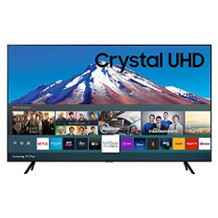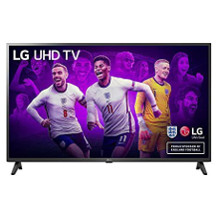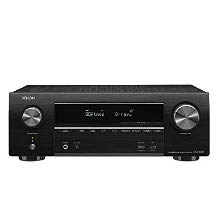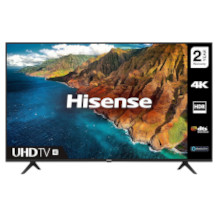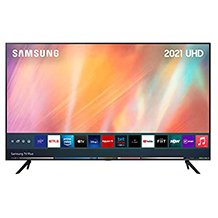QLED television purchasing advice: how to choose the right product
- What you need to know
- QLED is a screen technology developed by Samsung that competes with OLED TVs.
- Meanwhile, manufacturers like Xiaomi or TLC also use this technology.
- QLED TVswith mini LEDs deliver a better picture than regular QLED TVs.
- 4K is the standard resolution for QLED TVs, but there are also models with 8K resolution.
- Full HDMI 2.1. connections enable playback of 8K content as well as high frame rates of 120 hertz for 4K content.
QLED: Samsung’s answer to OLED technology
For years, two screen technologies have been vying for customers’ attention in the field of high-quality televisions: OLED, developed by LG, and QLED, developed by Samsung. Every year, new TVs appear with special features designed to enhance the viewing experience. It is therefore difficult for consumers to keep track of everything, let alone find the TV that meets their own needs.
What does QLEDmean?
QLED is a screen technology based on so-called quantum dots, developed by Samsung for TVs to compete with OLED(Organic Light Emitting Diode) technology. Meanwhile, other manufacturers like TLC or Xiaomi also use it for their TVs. QLED TVsfeature bright screens and intense, lifelike colors, so the picture is great to see even in bright rooms. Samsung QLEDTVseven have a color volume of 100 percent. They are similar to conventional LED TVs in structure, but are equipped with an additional foil that features the Quantum Dots.
How QLED TVswork
Each LED TV consists of several optical films, for example polarization and RGB filters, a liquid crystal layer and LED lighting. The colors are created by mixing red, blue and green light within each pixel. In QLED TVs, the quantum dot film is located between the LED illumination and the liquid crystal layer. This film emits pure green and red light when the TV is turned on. It optimally complements the LED light, which already contains blue. Thus, the backlight that hits the liquid crystal film has blue, red and green components, which makes the resulting colors on the screen particularly bright. Especially red and green shades are very intense and do not fade even in bright ambient light.
QLED and OLED in comparison
Unlike QLED TVs, OLED modelsdo not have a layer of LED backlights. Instead, a dedicated organic LED behind each pixel ensures that it lights up on its own. This means that a bright dot can easily be positioned next to a completely black pixel. This high-precision illumination results not only in true black, but also in first-class color contrasts. Furthermore, responsive displays are possible, which is especially advantageous for gaming.
However, OLED TVsare more expensive than equivalent QLED TVs. The latter, in turn, have better brightness values. Furthermore, there are models that come very close to the black of OLED. Accordingly, they provide very high color contrasts. Thanks to the Quantum Dots, the colors are also particularly pure.
Quantum dot technology at other manufacturers
Samsung developed the QLED technologyand launches most QLED TVson the market, but other manufacturers can also use the Quantum Dots technology. For example, the Chinese manufacturers TLC and Xiaomi as well as Hisense have QLED TVs in their product range.
Hisense alsouses quantum dots in theULED series. ULED or Ultra Light Emitting Diode is a marketing term to describe a multi-layer LED panel with various software and image optimization technologies, a quantum dot layer, and up to 1,280 dimming zones depending on the model.
The manufacturer LG has also been selling TVs with Quantum Dot technology and mini-LEDs since around 2021 – with the difference that they are called QNED. The difference to QLED TVslies in the built-in in-house NanoCell technology, which is also what the “N” in QNED stands for. This is a color filter technology based on special nanoparticles that improves color accuracy from different viewing angles. For this purpose, the particles suppress unwanted yellow components when reproducing the content.
Criteria for buying QLED TVs
When buying a QLED TV, the choice of screen technology is not the end of the story. In addition to the right size, the image quality and reproduction are especially important: There are clear differences between simple devices and premium models here.
Size and efficiency
Over the last few years, a screen diagonal of at least 50 inches has become the standard. One of the reasons for this is that screen technologies are now so sophisticated that no significant sitting distance is required to see razor-sharp images on large screen diagonals. Previously, a distance to the TV was required that was about twice the screen diagonal. In addition, resolutions of 4K or even 8K are more noticeable at large sizes.
Nowadays, it’s almost a rarity to have a TV smaller than 40 inches. Samsung also only has two QLED TVswith a screen diagonal of 32 inches from 2019 and 2022, and twelve with a size of 43 inches in its range. The largest selection of QLED TVscan be found in the 50 to 65 inch range. Furthermore, there are particularly large QLED TVswith a screen diagonal of 75 or even 85 inches. Which size is best depends mainly on your room situation and preferences. As long as you have enough space, you can freely choose the product. Thin QLED TVs, which almost melt into the wall, look particularly elegant. At Samsung, this design is known as AirSlim. At most, it might be that certain features like HDMI 2.1 ports are only available from a certain inch size like 55 inches.
Also note that the energy consumption of large QLED TVs is usually higher than that of small models. The current energy label usually assigns QLED TVsto energy efficiency classes E to G anyway, with G being the most inefficient. Classes A to D are hardly represented, if at all. More energy-efficient QLED TVswill only come onto the market in the coming years.
Resolution
One of the most important aspects of image quality is resolution, the number of pixels that make up an image. The higher the resolution, the sharper the content played. The standard resolution of QLED TVsis 4K or Ultra HD (3,840 x 2,160 pixels).
Meanwhile, there are also some premium TVs with 8K resolution (7,680 x 4,320). Depending on the extra features available, however, these can cost much more than 4K QLEDTVs. You can buy the Samsung Neo QLED 8K TV QN700A from 2021 on sale for less than 1,500 Euros, for example, but then you have to limit yourself to a refresh rate of 50 Hertz.
LED and mini LED
For some time now, Samsung has offered QLED TVsthat are equipped with mini-LEDs. Such models bear the name Neo QLED. In fact, mini-LEDs bring some advantages that live up to the term “Neo”. Although they are only a smaller version of the conventional LEDs installed in televisions, the compact dimensions mean that correspondingly more LEDs fit into a television. They are said to be about one fortieth the size of normal LEDs. This enables manufacturers to build thinner housings.
The biggest advantage, however, is the precise Full Array Local Dimming: The more LEDs are distributed over the entire screen surface, the more precisely certain areas in the image can be illuminated or darkened. It is possible, for example, to group certain mini-LEDs into zones and control them. In one zone, the LEDs then light up brightly, while other zones can remain dark. These unlit zones are in fact almost black. Then, during a movie, a single candlelight can shine in a dark room.
Even neo-QLED TVscannot come close to the so-called true black ofOLED TVs. This also applies to mini-LED TVs from other brands like the TCL 935. Nevertheless, the black levels are significantly better than those of QLED TVswith conventional LEDs or LCD TVs. So, if you value high contrasts and good black levels, you are better off with mini LEDs and high-quality local dimming than with normal LEDs
HDR
HDR or “High Dynamic Range” is a screen technology that optimizes the display of particularly bright or dark image content so that every detail is clearly visible. The original HDR standard, also called HDR10, is only capable of processing static image information. On the other hand, if the QLED TVhas HDR10+ or Dolby Vision, it can adjust brightness and color contrasts dynamically, i.e. frame by frame in real time. While Samsung relies on HDR10+, manufacturers like TLC use Dolby Vision or both standards.
Brightness
QLED TVsare considered to be very bright. The decisive factor is the amount of light available per square meter, i.e. the luminance in nits or candela per square meter. Premium models reach peak brightness levels of more than 1,500 nits, in some cases even over 2,000 nits. The higher the initial luminance value, the more detailed and contrasty the image. HDR content comes into its own better because the lighting can be more finely graded. In contrast, SDR (Standard Dynamic Range) content is designed for a luminance of 100 nits. However, good reflective filters are important at high peak brightness, otherwise you would see little of the image on a sunny day.
Samsung PQI
To illustrate the picture quality of its own TVs, Samsung developed a measure called PQI, or “Picture Quality Index.” It can be found in the device specifications under “Video”. Samsung does not reveal the exact evaluation criteria, but it is known that points like the resolution, the processor and the color reproduction play a role. It is important to note that the measurement starts at 200, but Samsung classifies the products between 2,000 and 4,800. Furthermore, the measurement is only used for Samsung products– the comparison with other TVs is therefore not possible.
Frame rate
The product description of every TV also includes the specification of the refresh rate in hertz. It tells how quickly and smoothly image content loads. Most modern televisions have a refresh rate of 60, 100 or 120 hertz. The latter is especially interesting for gamers, since the two consoles PlayStation 5 and Xbox Series X allow gaming at 120 hertz and 4K resolution – provided the TV has the appropriate connections.
Connections
In the meantime, there is hardly a TV that is not Internet-capable. Among other things, smart TVs allow users to download streaming apps such as Netflix and Amazon Prime, as well as browse the Internet. Accordingly, QLED TVsneed options to connect to the home network. Often, TVs not only have a WLAN module, but also a LAN connection. LAN interfaces are especially handy for those who have problems with their WLAN. They guarantee a permanently stable Internet connection, which is important for streaming and online gaming, for example.
For normal TV viewing, most QLED TVsare equipped with a triple tuner . As a result, cable, satellite and antenna television can be received. A CI+ module is often added so that the TV can receive encrypted programs.
Those who want to connect peripherals like game consoles need several HDMI interfaces. The current standard is HDMI 2.1. and can play content in 8K as well as with a refresh rate of 120 hertz. While the previous standard only allowed a bandwidth of 18 gigabits per second, full-fledged HDMI 2.1 even allows up to 48 gigabits per second. However, many TVs only have a limited HDMI 2.1 with a bandwidth of 40 gigabits per second, which can realize a refresh rate of 120 hertz and a 4K resolution, but has limitations in terms of color depth. You will usually get a full-fledged HDMI 2.1 port in all Samsung QLED TVs ofthe mid-range and upper class that have been released since 2022.
If you want to connect USB sticks, external hard drives or for example the dongle of your wireless keyboard, at least twoUSB ports are recommended. Headphones can often be paired via Bluetooth, so you can watch TV without disturbing your surroundings. To connect audio devices such as speakers to the TV, an optical audio cable is often available. It scores with low transmission loss and high sound quality.
One Connect Box
Some QLED TVsfrom Samsung come with the so-called One Connect Box. This is a rectangular box with all the TV connections you need in everyday life. These include
- One interface for LAN cable
- Connections for cable television,
- Satellite,
- a CI module for paid TV programs,
- two USB ports,
- four HDMI 2.1. ports,
- an HDD USB port for external hard drives, and
- a connector for optical audio cables.
Furthermore, the box can be connected to the mains power via cable. Another port is used to connect the One-Connect-Box to the TV. For this purpose, a special transparent cable with a length of 2.5 meters is usually included in the scope of delivery. If necessary, versions with a length of 5 or 15 meters can be purchased additionally.
A long connection cable is practical, for example, if the TV is not to be placed directly by the antenna socket, but on another wall. It is enough to position the box near the antenna socket and connect it to the TV using the long One-Connect cable.
Plus, you can easily connect your peripherals to the box without having to squeeze behind the TV. If the box is placed in a cabinet, for example, the cable clutter is hardly noticeable, so the room looks tidy.
Are HDMI 2.1 ports necessary?
Full-fledged HDMI 2.1 allows 8K resolution and a refresh rate of up to 120 hertz in principle, but at times there is hardly any content where these features are necessary. In fact, HDMI 2.0 is sufficient for TV programs, streams and Ultra HD Blu-Ray discs.
In total, the HDMI 2.1. standard supports up to 15 features, including the audioreturn channel eARC, which transmits high-quality surround sound from the TV to the sound system. Even 7.1 audio signals are possible, unlike the previous standard. For home theater fans, a better sound reproduction is definitely an enrichment.
For gamers, on the other hand, the Auto Low Latency Mode, or ALLM for short, is practical because it turns off unused functions of the TV in favor of a particularly fast response time. Since 8K resolution with a refresh rate of 60 hertz and 120 hertz with a 4K resolution are technically feasible for the two consoles PlayStation 5 and Xbox Series X, respectively, the standard is especially advantageous for console owners.
However, manufacturers can use the modular principle to select which of the 15 HDMI 2.1 functions the TVs can implement. Ideally, an HDMI 2.1 TV can at least realize a refresh rate of 120 hertz at a 4K resolution, but that is not a requirement to get the specification. It’s best to check with your prefect QLED TVto see what it’s compatible with.
ALLM and eARC can already be found in some 2019 TVs, while 4K with 120-Hertz refresh rate can be found in QLED TVsstarting in 2020, with the number increasing year by year. Top models usually support the most important features.
Sound
While the biggest focus in the production of QLED TVsis on picture quality, this does not mean that the sound should be neglected. Poor sound can definitely hinder the immersive cinema experience. The best sound on Samsung QLEDTVsis delivered by the top channel speakers of the NeoQLED range, which have an output power of 90 watts. Since Neo-QLEDTVsalso support the DolbyAtmos format, the built-in speakers can produce high-quality surround sound.
Of course, you can also connect a high-quality soundbar or surround system via the HDMI portor the optical sound output , since many QLED TVssupport a surround sound format like Dolby Atmos or DTS. Samsung‘sQ-Symphony feature ensures that compatible TVs and soundbars are perfectly matched.

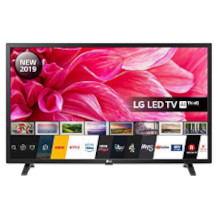
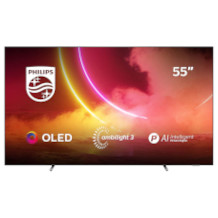
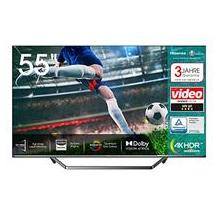






 1,844 reviews
1,844 reviews
